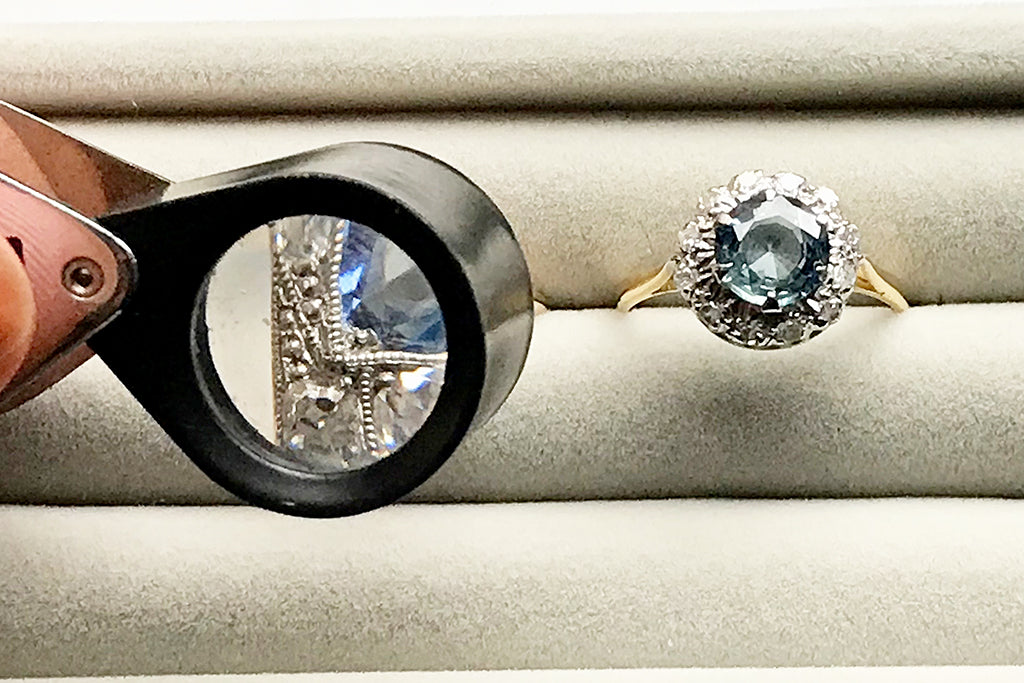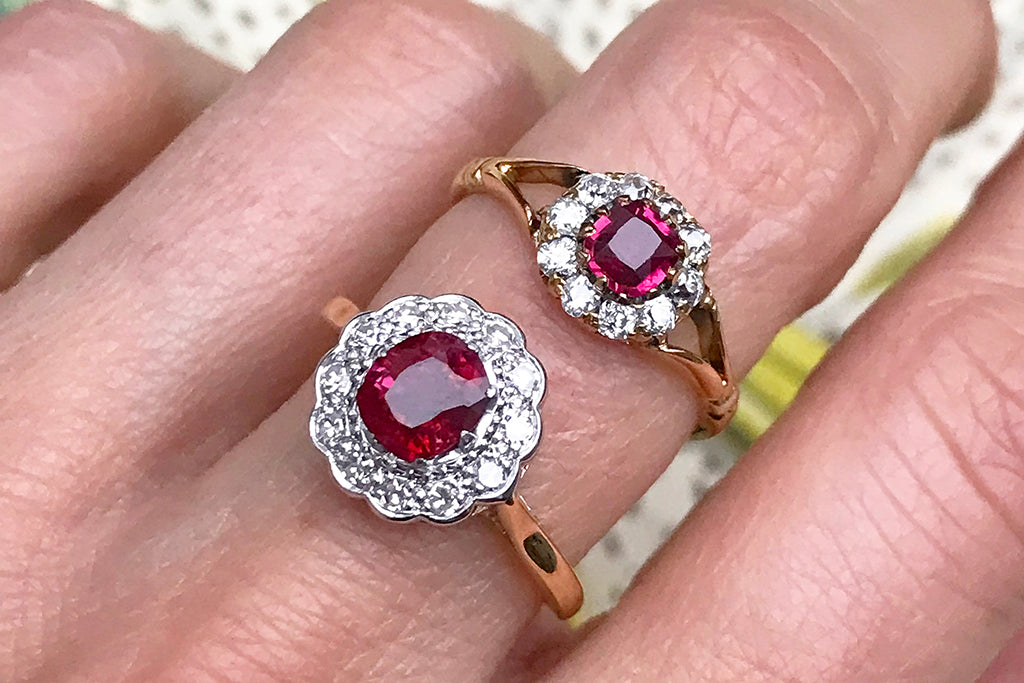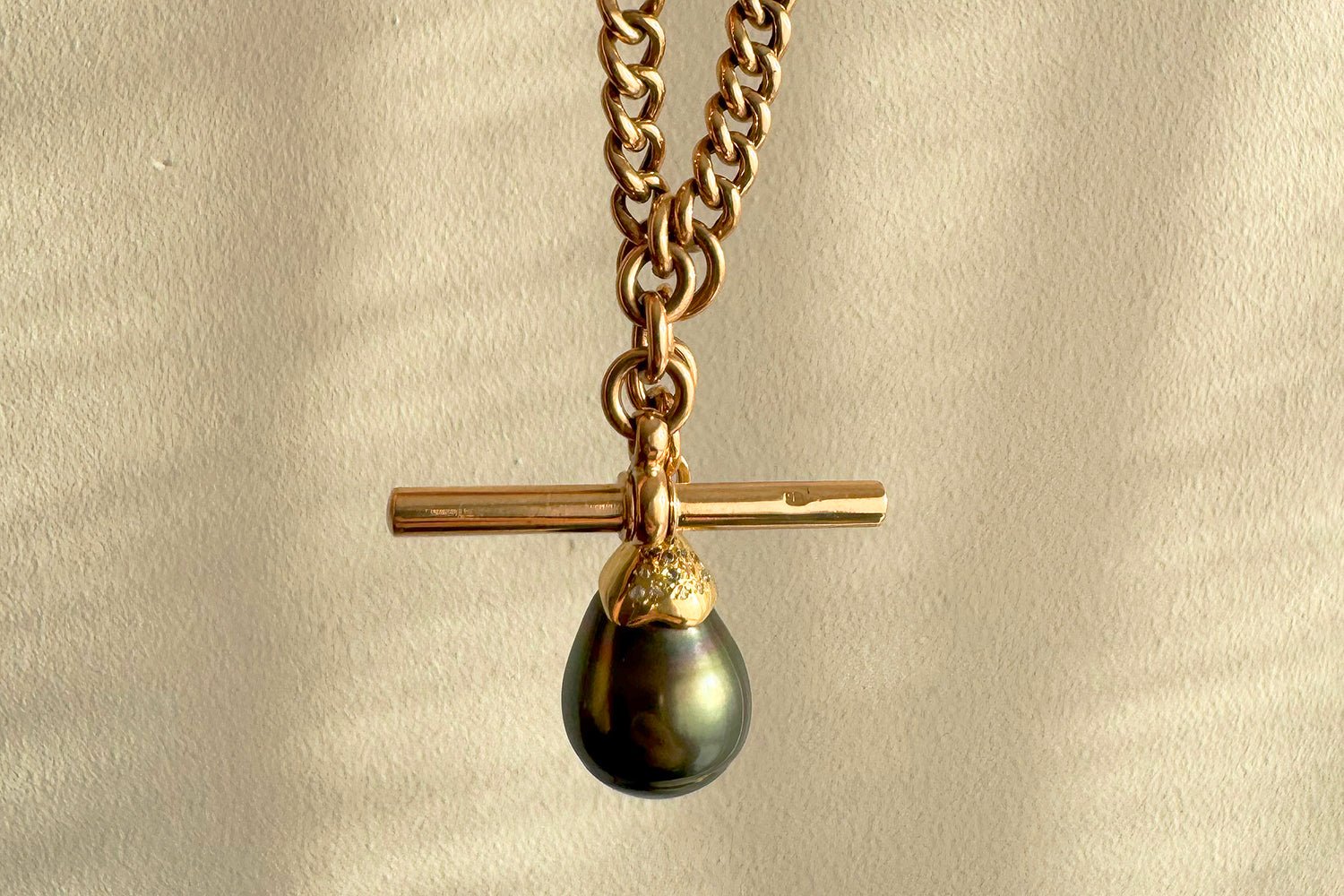
Do vintage rings go up in value?
At The Vintage Ring Co., we’re believers in shopping slowly and making long-term investments; we’re about heirlooms and ‘forever’ jewels. If you too are seeking a ring with longevity in mind, you might be wondering: “Will my vintage ring go up in value over time?” In this blog post, we’ll explore why vintage rings do (and don’t) hold their value, the factors that contribute to appreciation, and tips for choosing an antique or vintage ring that could increase in worth over time.
Do vintage rings hold their value?

It’s worth highlighting here the difference between vintage and second-hand. Whilst a second-hand ring could be one crafted, bought and resold within the month, most antique dealers would only classify a ring as vintage if it’s more than 40 years old. Meanwhile, antique rings are generally considered to be those crafted before the 1920s. This particular blog post is a discussion of antique and vintage rings only; not contemporary second-hand jewellery.
Like so many other commodities – from cars to iPhones and wedding dresses – new jewellery depreciates in value from the moment it’s bought, usually selling for around 20-40% lower than the original retail price. Vintage jewellery is too an example of second-hand jewellery that once depreciated in value after its original sale, only to become valued later on for certain other characteristics, once ripened to ‘vintage’ status. We’ll explore some of these factors now…
Craftsmanship & Quality
One of the primary reasons historic rings retain their value is exquisite craftsmanship. Many antique rings were created during periods when handcrafting was the norm, often boasting an organic uniqueness or intricate details that are difficult to replicate with modern mass-production methods. Although the subjective preference of many people is for the symmetry and precision of contemporary manufacturing, collectors who appreciate the character and rarity of traditional craftsmanship may place more value on a hand-faceted old-cut diamond than a second-hand machine-cut diamond, for example.
The allure of vintage rings lies not only in the physicality of their craftsmanship, but the scarcity of those details in this day and age, and the historical contexts that gave rise to them.
Historic Value
Vintage rings often tell a story - both of the eras in which they were created and of the lives they’ve touched. It’s this history that contributes to the desirability of vintage rings, and this desirability often translates to financial value.
A ring from the 1920s might have survived the Great Depression, passed through generations, and live to tell the tale in one piece. Jewels with notable provenance or those that bear historically iconic characteristics – like the Edwardian daisy cluster or the Art Deco target halo – are valued for their authenticity and what they tell us about the materials, technologies and trends of the past. This is particularly true of jewellery whose age can be corroborated with official marking and hallmarks.
Timeless Designs & Cyclical Trends
Some vintage jewellery styles are timeless, transcending the relentless ebb and flow of fashion trends. For example, the classic solitaire diamond blueprint pioneered by Tiffany in 1886 has not lost its appeal in 134 years; in 2023, 43% of all engagement rings sold in the UK were solitaire diamonds. With new generations of buyers engaging repeatedly with prevailing styles like these, demand – and economic value - stays consistently high.
The cyclical nature of fashion also plays a role. As historic styles regularly resurface on runways and in pop culture, the vintage originals of these eras often become highly coveted again. For example, Vivienne Westwood’s iconic Bas Relief pearl choker, originally debuted in the 1980s, was dubbed the TikTok Necklace in 2021 when spotted on the likes of Rihanna, Dua Lipa, Katy Perry and Machine Gun Kelly. This phenomenon drove the resurgence of pearl chokers, named in Vogue earlier this year – three years after the original TikTok boom - as one of 2024’s key prevailing trends.

Rarity & Demand
Rarity is a key factor in value appreciation. Some vintage rings are particularly rare due to their hailing era, designer, or style. For example, in spite of tending to lack gemstones, the rarity of fede gimmel rings like our articulated Blythe ring can see them valued similarly to more common designs that are technically ‘richer’ in their precious materials.
Like any jewellery, the value of vintage rings is influenced by broader market trends. For instance, if the price of gold rises significantly, it can drive up the value of vintage gold rings. Similarly, changes in contemporary consumer preferences can impact market value; emerald engagement rings are less popular now than they were before, for example.
Provenance & Documentation
Provenance - an item’s documented history - can have a significant impact on value. If a vintage ring comes with a known origin or a connection to a specific event or person, its value will probably increase over time. For instance, rings with hallmarks from a well-known jewellery house like Cartier, Boucheron or Tiffany & Co. often command higher prices due to their recognised quality and brand prestige. Likewise, a ring with a detailed certificate of provenance is more likely to appreciate in value over time because this documentation itself is a valued asset.
Do some vintage rings go down in value?

Whilst antique and vintage rings have strong potential for value appreciation, it’s important to remember that not all are guaranteed this ascent. Several factors can lead to the depreciation of a vintage ring’s value, but the condition of a piece of jewellery is the key cause. Rings that have been well-maintained or show minimal wear are of course more desirable to buyers. Conversely, pieces with significant damage, worn prongs, or missing stones may require costly repairs, which in turn makes them less desirable. Regular upkeep and professional cleaning will help preserve a vintage ring and maximise its potential to go up in value.
What to consider when investing in a vintage ring

Buy what you love
The first rule of investing in vintage or antique jewellery is to buy what you love. Whilst financial appreciation is a great bonus, the true value of a vintage ring lies in the joy it brings you. Choose pieces that speak to you personally, and this emotional connection is timeless; you’ll always feel you’ve made a good investment, regardless of market trends.
Seek Expertise
The vintage jewellery market can feel complex and overwhelming, so it’s worth seeking advice guidance from trusted experts or appraisers. Reputable dealers should provide insights into a piece’s history, materials, and potential value. The Vintage Ring Co., for example, is a brand founded and run by two jewellery experts with over 40 years of combined experience in the jewellery industry. Pooling this knowledge, we only source rings that we know to exhibit high quality craftsmanship and materials. Then, we have each ring independently valued by an appraiser at the London Assay Office and share the information via the unique certificate of provenance that comes with each ring. Any pervious alterations or repairs are accounted for; a level of transparency that enables our clients to make informed decisions on their investment.

Think Long-Term
Like any investment, vintage rings typically appreciate over the long term rather than providing immediate returns. If you’re buying with investment potential in mind, be prepared to hold onto your vintage ring for several years to realise its full value.


